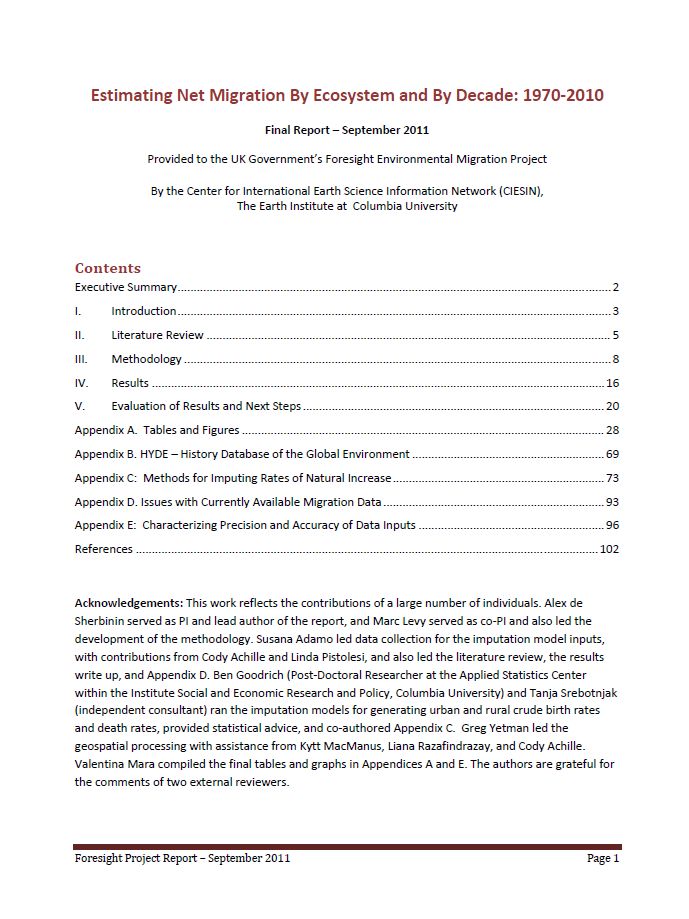
Migration and Risk
Net Migration in Marginal Ecosystems and Hazardous Areas
- Publication
- Citation
Sherbinin, Alex de et al. 2012: "Migration and risk: net migration in marginal ecosystems and hazardous areas". Environmental Research Letters, Vol. 7, No. 4, 1-14.
The results of a research project undertaken by the Center for Earth Science Information Network (CIESIN) at Columbia University to which Ecologic Institute Senior Fellow Tanja Srebotnjak contributed have been published in the scientific journal Environmental Research Letters. The study produced geospatially explicit estimates of human net migration across ecosystems between 1970 and 2010. In the publication, the authors examined the particular effects of human migration patterns on sensitive ecosystems and regions at risk of adverse effects of climate change. The study is available for download.
The potential for altered ecosystems and extreme weather events in the context of climate change has raised questions concerning the role that migration plays in either increasing or reducing risks to society. Using modeled data on net migration over three decades from 1970 to 2000, the authors identify sensitive ecosystems and regions at high risk of climate hazards that have seen high levels of net in-migration and out-migration over the time period. The paper describes the patterns of net migration for various ecosystems and high risk regions. The study finds that negative net migration generally occurs over large areas, reflecting its largely rural character, whereas areas of positive net migration are typically smaller, reflecting its largely urban character. The countries with largest population such as China and India tend to drive global results for all the ecosystems found in those countries. Results suggest that from 1970 to 2000, migrants in developing countries have tended to move out of marginal dryland and mountain ecosystems and out of drought-prone areas, and have moved towards coastal ecosystems and areas that are prone to floods and cyclones. For North America results are reversed for dryland and mountain ecosystems, which saw large net influxes of population in the period of record.
The study can be downloaded free of charge under a Creative Commons Attribution-NonCommercial-ShareAlike 3.0 license.






